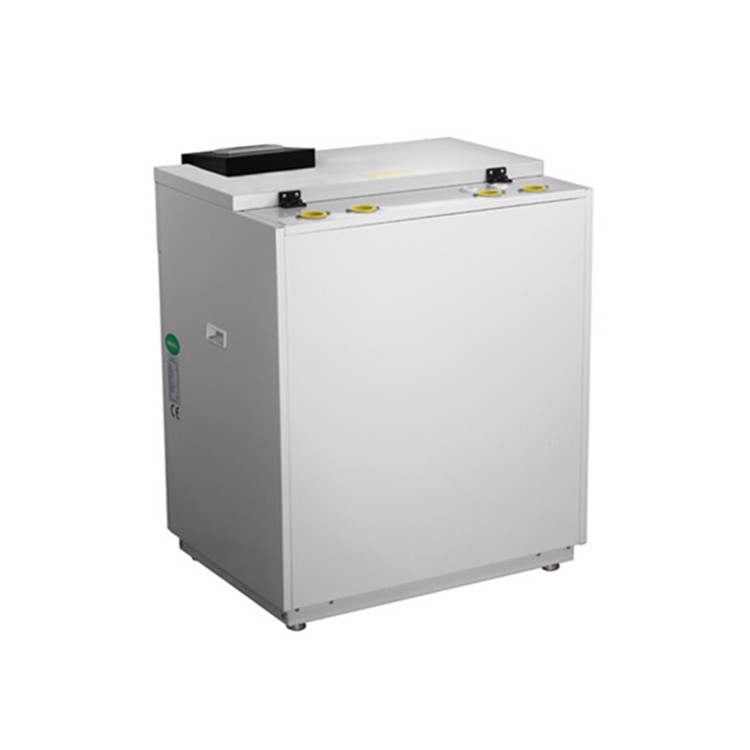Description
Geothermal heat pump is an environmentally friendly and
economical way to heat indoor and outdoor swimming pools at home and commercial
scale.
The heat pumps are currently the most efficient heating system. A
well-performing heat pump can generate about 4 kilowatts of heat for every 1
kilowatt of electricity—400% efficiency, while modern gas boilers have an
efficiency of 90%.
The heat pumps can also be connected with solar and wind power to achieve
complete pollution-free and carbon-free.
How does the Geothermal heat pump work?
Geothermal heat pumps use heat energy from the ground. They are
realized by laying horizontal ground loops in trenches about 100m long and 1m
deep, or if this method has limited space, a vertical closed loop system can be
installed in the borehole. The borehole reaches an average depth of 100m. These
pipes circulate water and antifreeze solution, collect energy from the ground
and transfer it to the compressor, which raises the temperature to a usable
ambient temperature.
Geothermal heat pump cost
The typical cost of installing a geothermal heat pump in a new
property is £16,500. All systems we quote will be accompanied by energy savings
and operating cost comparison tables; it takes into account all variables to
make extremely accurate predictions of final savings.
Compared to existing oil, LPG or electricity systems, ground source heat
pumps have been shown to have excellent payback periods, typically less than 4
years. While initial installation costs are high, ground source heat pumps
offer long-term savings as the system lasts for more than 25 years. As natural
gas prices continue to rise, payback periods continue to decrease, while
electricity prices will fall due to investments in renewable electricity
production. For these reasons, we are seeing an increasing popularity of geothermal heat pump systems.
Which geothermal pump loop collectors are right for me?
Geothermal heat pump collector systems are divided into four
categories:
Horizontal Loop - Ground Source Heat Pump
These can be used when you have space in the garden to lay the pipes
horizontally on the ground. The trench is about 1.2m deep and 250mm - 400mm
wide. Collection pipes are then laid into these trenches and backfilled with
the removed soil. Ditches must be at least one metre apart and one metre from
any foundations or building services. The average property requires 400 meters
of pipes and therefore 400 square meters of land for trenching.
The grooves must be the same length to ensure equal pressure drop across
the collector system. Should not be built on the surface above the collector.
Vertical Drilling Loop - Ground Source Heat Pump
The boreholes are dug underground and are usually about 90 meters deep.
It is common to dig two holes for a home. The holes are approximately 200mm
wide and must be kept at least ten meters apart from each other. Lower one ring
into the drilled hole with a weight to make sure it reaches the bottom of the
hole. The holes are then backfilled with grout mix, which can easily transfer
heat from the ground to the pipes. This loop connects back to the geothermal
heat pump unit in your home.
Open Loop Drilling System - Geothermal Heat Pump
A separate extraction and discharge well is dug underground. One will
draw water from the water table and the other will discharge the same back into
the ground after passing through a heat pump heat exchanger. Special design
considerations are given to avoid flow short circuits, and flow direction must
also be considered.
Since the extracted water is not contaminated in any way, these systems
often combine an extraction well with a well heat pump to allow the property to
drink potable water for free. These systems don't always offer the lowest
running costs because you have to run the large water pump at the same time as
running the GSHP itself.
Open Loop Water Source - Ground Source Heat Pump
The system draws and then re-discharges water from a nearby stream or
river. Properties with large ponds or lakes can also use this system as it
draws water from a source and uses the energy in the water to power a heat
pump. These systems are similar to "well" type open loop systems. It
is possible to see a CoP of over 5, but in addition to the ground source, we
must also consider the electrical energy to run the pump. Sometimes, when
abstraction permits are more difficult to obtain, we actually put a compact
collector into the water, so no extraction is required, so an Environment
Agency permit is not required.
Advantages of geothermal heat pumps
Geothermal heat pumps only use electricity to transfer heat, not
generate it. So geothermal heat pumps are very energy efficient and
customers love energy savings! The efficiency of a swimming pool heater is
measured by its coefficient of performance (COP). The COP of a heat pump is
usually between 5 and 6, which means an efficiency between 500% and 600%.
Other advantages of geothermal heat pumps include: low operating
costs, long service life, quiet operation and small environmental footprint.
Disadvantages of geothermal heat pumps
Geothermal heat pumps have few disadvantages. Compared to gas
heaters, their significant disadvantages include high purchase and installation
costs, and slow heating rates.






